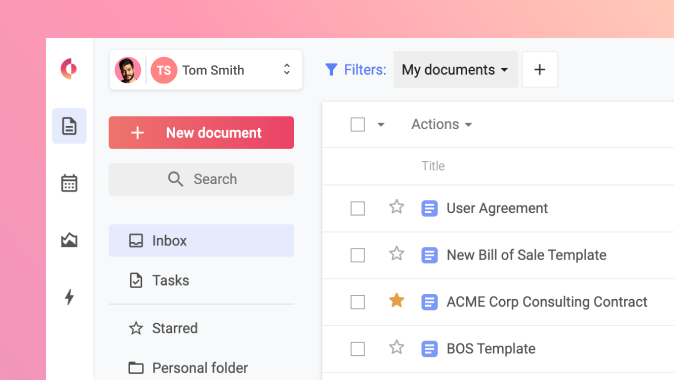Top 3 Contract Redline Barriers, and What To Do About Them
We sat down with thought leaders in contract management to learn their insights, predictions, and advice for improving this field of work. Michael Fulmer is the General Counsel at Malone Workforce Solutions, a staffing company who prides itself on “local expertise plus centralized support, backed by a built-in quality program.”
When you are a one-person in-house counsel like Mike Fulmer, you have to learn ways to tighten up the contract process as much as possible. One area that quickly stands out as an area for improvement is the redline process.
The redline stage of the contract cycle is where the most delays can happen. The back and forth of negotiations gets even slower and more cumbersome when redlining isn’t made as simple as possible.
Here are the top three redlining roadblocks that Mike sees, and how to work through them.
Redline Roadblock #1: Getting A Contract in a Format You Can Redline
It sounds obvious, but the first hurdle is often simply getting a contract in a form that is easy to redline. For Mike, this means a document that he can easily comment on and communicate clearly with the other party.
Is it just a matter of PDF or Word Doc? Turns out, this is a symptom of a much bigger issue.
What Mike often sees at Malone Solutions, a staffing company that services the entire U.S., is that vendors expect his team to figure out how to redline a PDF because they see their Legal team as a roadblock.
He has seen this issue throughout his career, from Sales to Procurement, and many other departments.
“Procurement departments just want you to figure it out, without having to go back to Legal (for another document format). Because then it will slow them down and potentially lead to more questions.”
The root of the solution here is for Legal to be a teammate, not an obstacle.
Other departments have to accept that the other party will need a clear method to redline, and plan accordingly. If that means their Legal team needs to be slightly more involved, then so be it.
Everyone saves time in the long run by not making redlining a formatting headache.
Redline Roadblock #2: Not Templating Common Redlines
Lots of contract processes template agreements as a whole, or at least clauses. Obviously, it is faster and more efficient to not start from scratch every time on a contract that you need regularly.
But Mike advises taking this time-saving tactic a step further.
“I recommend coming up with your top ten most common redlines, and having them somewhere you can copy and paste them in negotiation.”
After all, when the Malone team is transacting hundreds of contracts annually, he tends to see the same redlines recur often.
Naturally, this depends on your industry and the type of contracts that you regularly handle, but there could be opportunities to streamline.
This ties directly to the third major roadblock Mike sees to redlining: endless addendums.
Redline Roadblock #3: Frequently Used Contracts Rely Too Heavily on Addendums
There is another symptom of teams like Procurement and Sales seeing Legal as a bottleneck for completing deals. Mike noted that rather than rewriting contracts that have evolved past their original usefulness, many teams rely on addendums to update terms.
True, the addendums may eventually cover all the bases, but they aren’t the cleanest way to communicate contract requirements.
Mike summed up this common practice:
“Even when it doesn’t make sense because the relationship has evolved, they still want to do the addendums. It’s inappropriate. It will work, yeah probably, but it’s not ideal.”
Tons of addendums can slow down the redline process because they make the contract itself less clear. A much more reliable practice is for Legal to periodically update contract templates to better fit the changing needs of their stakeholders.
Not only is the contract more clean, but there is less room for human error and unapproved language in the mess of addendums.
Reading Between the (Red)Lines
When it comes to redlining a contract, Mike Fulmer understands how important it is to make this part of the contract process as smooth as possible.
Beyond the mechanics of simply making comments and edits, there is a bigger theme for Mike. How can Legal be more of a trusted resource for other teams? How can he make sure everyone feels confident going to in-house counsel for better contract formats or updated agreements?
It’s an ongoing process that legal experts like Mike continue to improve. Better redlining means a better contract process. That means more revenue for the business, and that’s a win-win for everyone.



